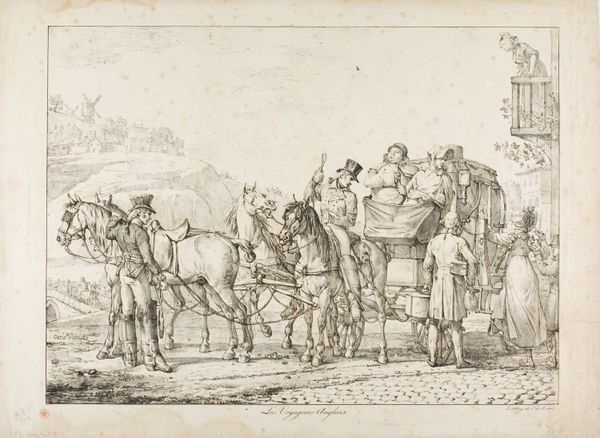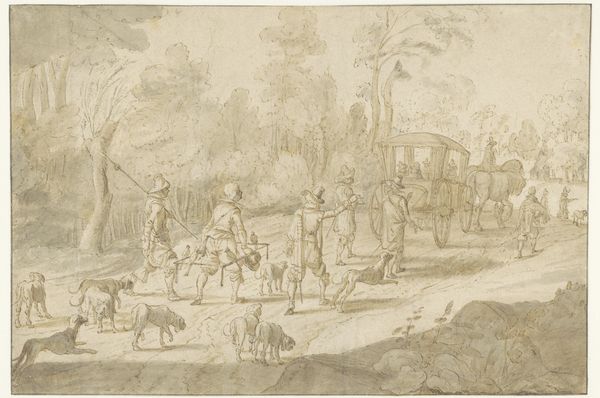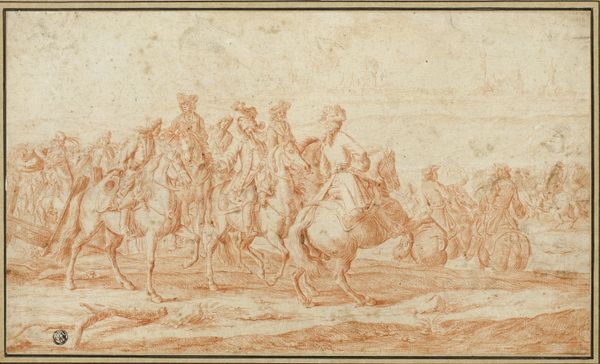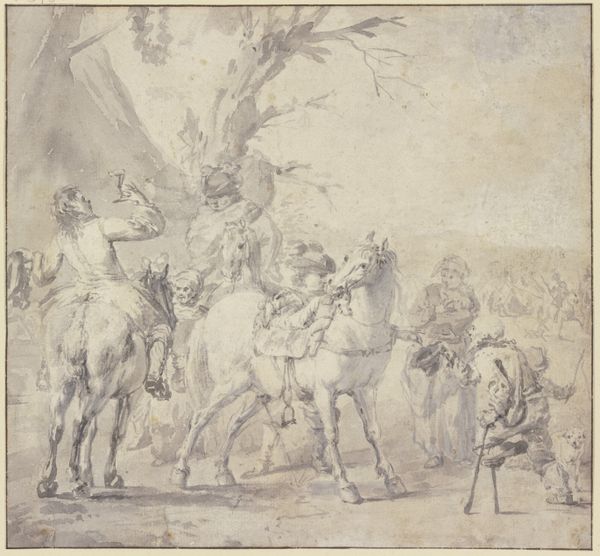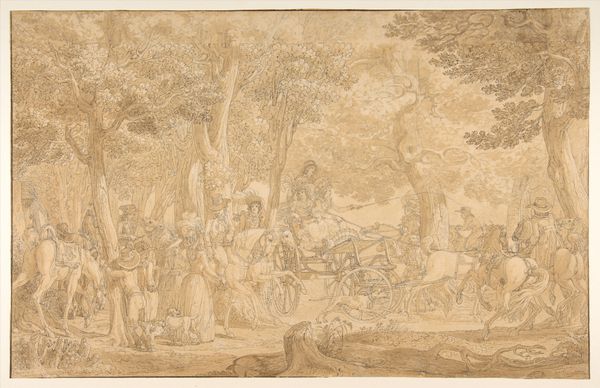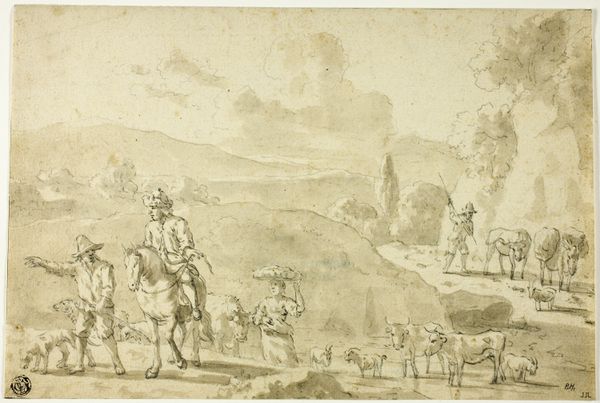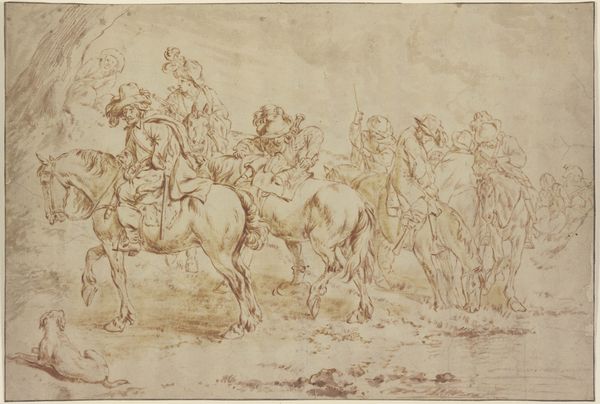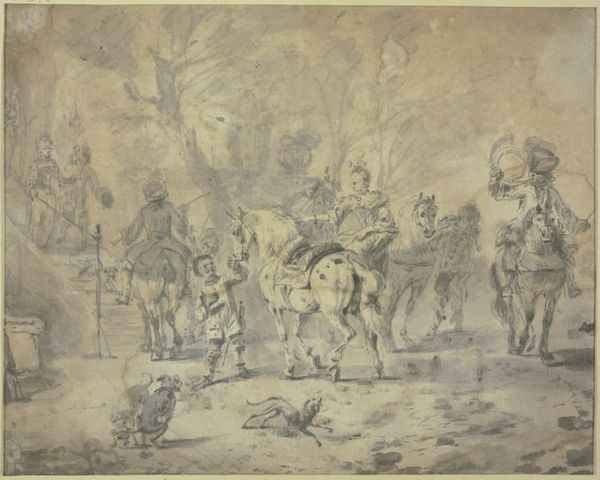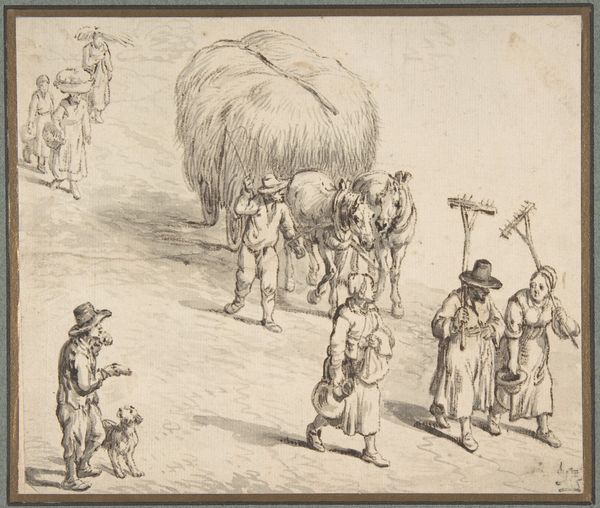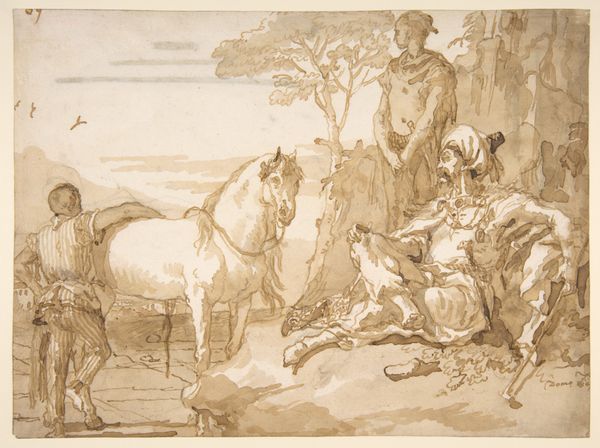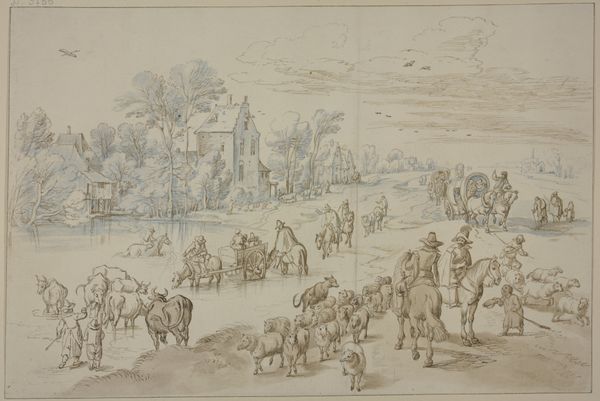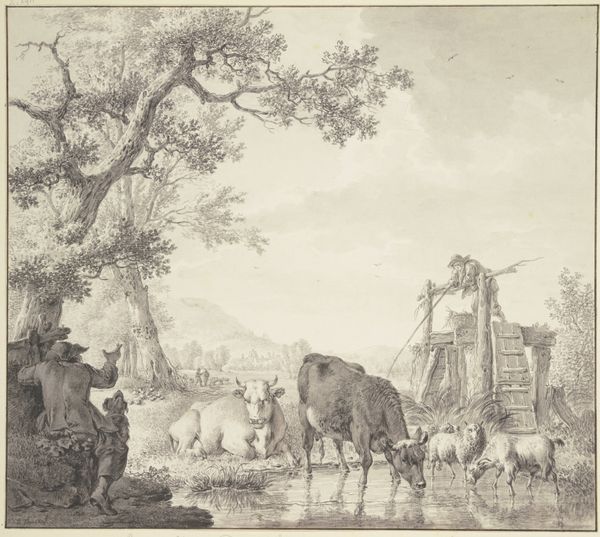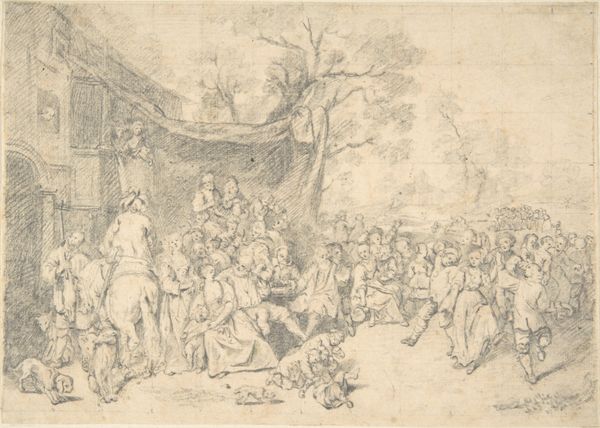
drawing, ink
#
drawing
#
baroque
#
caricature
#
landscape
#
figuration
#
ink
#
genre-painting
#
history-painting
Dimensions: height 212 mm, width 282 mm
Copyright: Rijks Museum: Open Domain
Editor: Right in front of us, we have "Overval op een reiswagen," or "Attack on a Carriage," rendered in ink on paper by Sebastiaen Vrancx, made sometime between 1583 and 1647. The monochromatic scene feels almost dreamlike, despite its violent subject. What compositional elements stand out to you? Curator: The linear construction predominates. Observe how Vrancx employs tightly controlled hatching and cross-hatching to define forms, creating depth through the density of the marks rather than a manipulation of tone. Note the way he uses these intricate lines to create both foreground and background. The tension resides less in what's depicted than in *how* it's depicted, wouldn’t you agree? Editor: I think so. The stark contrast, or lack thereof, almost softens what would otherwise be quite a dramatic scene. The figures, almost blending in with the background. Is that typical for Vrancx? Curator: Vrancx often used that effect in this medium. The line becomes the defining element, almost irrespective of its narrative function. He emphasizes formal qualities by drawing attention to the execution of lines, rather than using the color palette for conveying tonal subtleties. Think of the line as the pure signifier; it is at the surface where meaning arises. The absence of stark chiaroscuro in areas like the wagon further emphasizes this quality, reducing dimensionality in favor of a network of meticulously placed marks. What does that do to our understanding? Editor: It almost detaches the violence of the scene from the artwork itself. You notice the forms and lines more so than the actual conflict. Curator: Precisely. The linear and the textural elements override the historical, if only for a fleeting moment. It prompts a reassessment of what we perceive as important. Editor: I never thought of looking at a Baroque artwork quite that way. It makes me appreciate the medium a bit more!
Comments
No comments
Be the first to comment and join the conversation on the ultimate creative platform.
